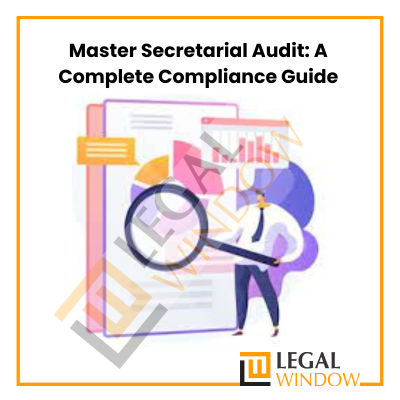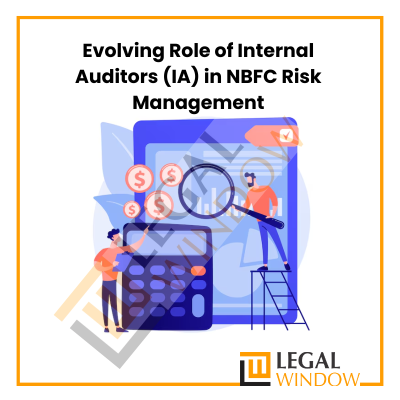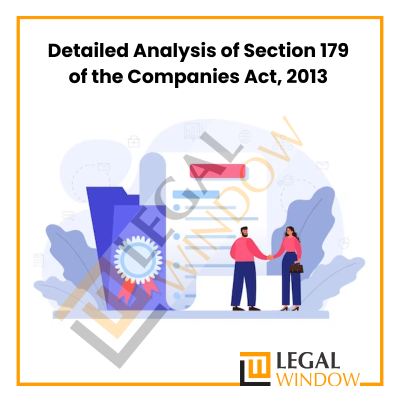Everything You Need to Know About the Foreign Exchange Management Act’s FEMA and RBI Compliances
- September 6, 2022
- FEMA
 Due to the complexity of different industrial areas, corporations and individuals always struggle to comply with FEMA/RBI rules within the allotted period. Globalization has greatly raised the significance of FEMA/RBI compliance. We have a knowledgeable staff that specializes in the following Foreign Exchange Management Act, 1999 related activities as well as other Reserve Bank of India-required compliances (RBI).
Due to the complexity of different industrial areas, corporations and individuals always struggle to comply with FEMA/RBI rules within the allotted period. Globalization has greatly raised the significance of FEMA/RBI compliance. We have a knowledgeable staff that specializes in the following Foreign Exchange Management Act, 1999 related activities as well as other Reserve Bank of India-required compliances (RBI).
Before we shall move on to discuss the compliances under the FEMA/RBI, let us first discuss the FEMA and RBI.
| Table of Content |
Basics of FEMA
The Indian Central Government passed the Foreign Exchange Management Act, of 1999 to ease India’s foreign payments and cross-border commerce. Foreign Exchange Regulation Act (FERA) was replaced by FEMA (Foreign Exchange Management Act) in 1999. (Foreign Exchange Regulation Act). FEMA (Foreign Exchange Regulation Act) was established to remedy all of FERA’s defects and limitations, and as a result, it implemented several economic changes (major reforms). The primary purpose of FEMA’s creation was to de-regulate and liberalize India’s economy.
Why was FEMA introduced?
FEMA was founded in India with the main objective of enabling global payments and trade. FEMA was established to support the orderly growth and upkeep of the Indian currency market. All foreign exchange transactions in India must follow the guidelines established by the Foreign Exchange Management Act (FEMA). Foreign exchange transactions have been divided into two categories: capital account transactions and current account transactions.
The FEMA Act defines the balance of payment as a record of exchanges of goods, services, and assets between nationals of various nations. The two most common forms of accounts are capital accounts and current accounts.
All capital transactions are included in the capital account, whereas goods commerce is included in the current account. The entrance and outflow of funds to and from a nation or country during a year as a consequence of dealing in goods, providing services, and earning income are referred to as current account transactions.
A country’s economic health can be assessed by looking at its current account. The capital account accounts for the movement of capital in the economy as a result of capital revenues and expenditures, as was previously said. The balance of payments is composed of both current and capital accounts. The capital account records both domestic investment in overseas assets and foreign investment in domestic assets.
Basics of Reserve Bank of India (RBI)
A country’s payment and settlement system have an impact on both its overall economic performance and its stability. To secure and continue the growth of payment systems at the national level, the different authorities in India, including the central bank, have been constantly and persistently modifying their operational models and rules. These regulators are obligated to take great care to protect the integrity of payment systems from systemic hazards, fraud risk, etc. The maintenance and advancement of national payment system development is the duty of each nation’s central bank. This duty is under the purview of the Reserve Bank of India in India (RBI).
Establishment of the RBI
The Reserve Bank of India (RBI) was founded in 1935 by the Reserve Bank of India Act, 1934. The RBI, which is headquartered in Mumbai, is completely owned and run by the Indian government. The RBI’s activities are regulated by the Central Board of Directors, which is made up of 21 members selected by the Government of India under the Act. The Central Board of Directors is made up of both Official and Non-Official Directors. The Governors would be selected for a four-year term, with the addition of four Deputy Governors. The Non-Official Directors are made up of ten directors elected from various areas, as well as two government officials.
The RBI’s Objectives
According to the Preamble, the RBI’s principal purposes are as follows.
- To control the issuance of banknotes.
- To ensure the country’s monetary stability.
- To handle economic problems, the monetary policy framework must be modernized.
The RBI’s major mission is to monitor and carry out activities on behalf of the financial sector, which includes financial institutions, commercial banks, and non-banking financial companies. The RBI is making important efforts to reorganize bank inspections and strengthen the role of statutory auditors in the banking sector.
Now let us discuss the compliances under FEMA/RBI
Checklist for FEMA and RBI Compliance
The Foreign Exchange Management Act, of 1999 has functioned as a stimulus for India’s growth and development in a variety of areas. The primary goal of FEMA is to ease external commerce, balance payments, encourage orderly growth, and sustain India’s foreign exchange market.
| Sr. NO. | Particular compliance(s) | Compliance(s) details | Who is needed to comply and why? | deadline(s) | Important Points |
| 1 | Annual Return on Foreign Liabilities and Assets (FLA Return) | Every India-based company that has received FDI and/or made ODI in the previous year(s), including the current year, is obliged to submit an FLA Return. | Who, as of March 31, 2018, has foreign assets or liabilities in their financial accounts? | Yearly on or before July 15 | If an Indian company has no outstanding FDI and/or ODI investments after the fiscal year, it is not required to file the FLA Return. Similarly, if an Indian company has not received any new FDI and/or ODI in the previous year but has outstanding FDI and/or ODI, the company must still file the FLA Return every year by 15 July. |
| 2 | Annual Performance Report (APR) | For any joint venture (JV) or wholly owned subsidiary (WOS) outside of India, an Indian Party (IP) / Resident Individual (RI) that has made an Overseas Direct Investment (ODI) is required to file an Annual Performance Report (APR) in Form ODI Part II to the AD bank. | An Indian Party (IP) or Resident Individual (RI) that has made an ODI | Every year, on or before December 31. | APR must be validated by the Indian party’s statutory auditor. In the case of Resident Individuals, certification of APRs by the Statutory Auditor or Chartered Accountant is not required, and self-certification is acceptable. |
| 3 | External Commercial Borrowings | All ECB transactions must be reported by borrowers to the RBI once per month in the form of an “ECB 2 Return” through an AD Category-I Bank. | Borrowers must disclose all ECB transactions. | Every month | The updated ECB 2 Return reduces disclosure of hedging details into two categories – financial and natural and demands disclosure of only the following:
|
| 4 | Single Master Form {w.e.f. 30.06.2018} | Combines the reporting requirements for FDI in India, regardless of the method used to invest. | One master form that combines the FC-GRP, FC-TRS, LLP-I, LLP-II, CN, ESOP, DI, and DRR forms. |
|
FC-TRS: Individual Filing: The transferor or transferee corporation that is based in India may report in FC-TRS. After registering as a business user, a resident individual may record a transfer between persons, but the authorization letter must be in the reporting individual’s name. |
| 5 | Advance Reporting Form (ARF) | Inform the Reserve Bank’s concerned Regional Office of the amount of the consideration through its AD Category I bank. | A company based in India that accepts foreign investment in exchange for the issuance of shares or other instruments that qualify for the FDI Scheme. | Not later than 30 days after the Advance Reporting Form’s receipt (ARF) | |
| 6 | Form FC-GPR | The issuance of bonus or rights shares to individuals residing outside of India must be disclosed in Form FC-GPR, as must the issuance of shares in connection with the conversion of ECBs, royalties, lump-sum technical know-how fees, or the import of capital goods by units in SEZs. | When shares or other securities are issued, the Indian business must provide | 30 days from the day the shares were issued, at the latest | |
| 7 | Form FC-TRS | Form FC-TRS must be used to report transfers of shares and other permissible securities between residents and non-residents as well as vice versa. | The AD Category – I bank should receive the Form FC-TRS. | Within 60 days after the date, the amount of consideration was received. | The transferor and transferee, both of whom must be residents of India, are responsible for submitting Form FC-TRS within the allotted time frame. |
| 8 | Form ODI | Overseas financial commitments made to wholly owned subsidiaries and joint ventures (JVs) (WOS) | Form ODI must be submitted by both an Indian Party and a Resident Individual undertaking an overseas investment. | Obtain share certificates or any other documentary proof of participation in the overseas JV or WOS and provide it to the designated AD within six months as proof of investment; | When shares or securities are sold in the case of disinvestment, the sale proceeds must be returned to India as soon as they are received and, in any case, no later than 90 days after the date the shares or securities were sold. Documentary proof to this effect must be submitted to the Reserve Bank through the designated Authorized Dealer. |
 Takeaway
Takeaway
A crucial requirement of the FEMA Act that all businesses must adhere to is the submission of annual FEMA and RBI compliance reports. Non-filing is subject to fines and has damaged the reputation of the business. Therefore, it is advantageous to fulfill these conditions before the deadline.
You will be assisted by Legal Window to submit your RBI Compliance. You will be guided by our experts through intricate corporate compliance procedures, such as XBRL filing, etc.
CS Urvashi Jain is an associate member of the Institute of Company Secretaries of India. Her expertise, inter-alia, is in regulatory approvals, licenses, registrations for any organization set up in India. She posse’s good exposure to compliance management system, legal due diligence, drafting and vetting of various legal agreements. She has good command in drafting manuals, blogs, guides, interpretations and providing opinions on the different core areas of companies act, intellectual properties and taxation.
Categories
- Agreement Drafting (23)
- Annual Compliance (11)
- Change in Business (36)
- Company Law (148)
- Compliance (90)
- Digital Banking (3)
- Drug License (3)
- FEMA (17)
- Finance Company (42)
- Foreign Taxation (6)
- FSSAI License/Registration (14)
- GST (118)
- Hallmark Registration (1)
- Income Tax (200)
- Latest News (34)
- Miscellaneous (164)
- NBFC Registration (8)
- NGO (14)
- SEBI Registration (6)
- Section 8 Company (7)
- Start and manage a business (21)
- Startup/ Registration (130)
- Trademark Registration/IPR (40)
Recent Posts
- NGO Darpan Registration in Jaipur May 2, 2024
- Registration of Charges with ROC May 1, 2024
- Post incorporation compliances for companies in India April 30, 2024
About us
LegalWindow.in is a professional technology driven platform of multidisciplined experts like CA/CS/Lawyers spanning with an aim to provide concrete solution to individuals, start-ups and other business organisation by maximising their growth at an affordable cost.








